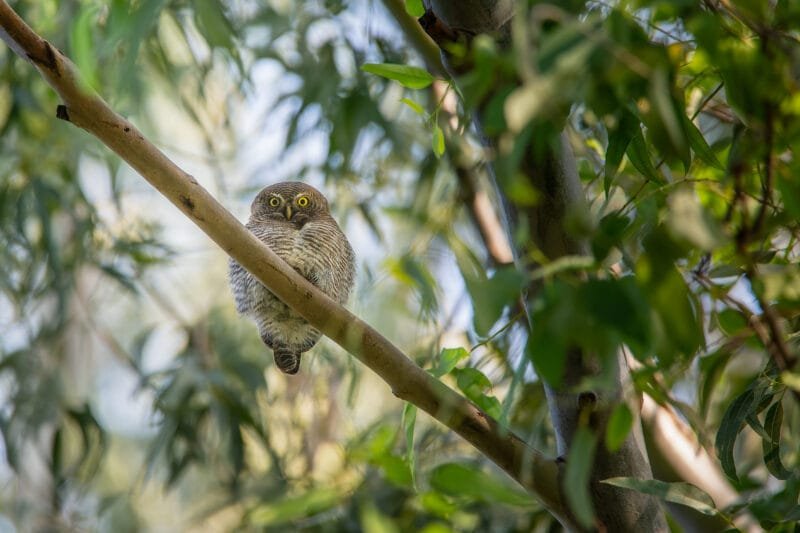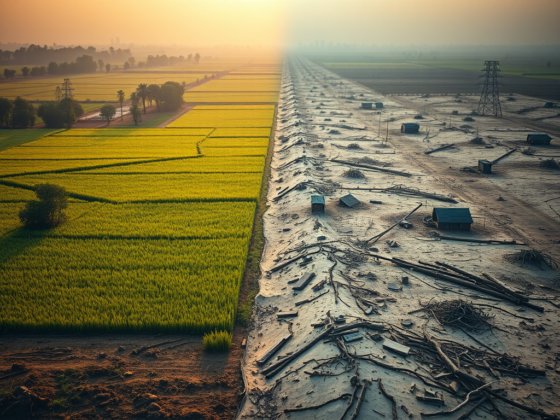In the heart of Uttarakhand, India, the Rajaji Raghati Biosphere (RRB) stands as a beacon of hope for conservation efforts. Spearheaded by Mr. Jai Dhar Gupta, a renowned clean-air activist and entrepreneur, this initiative represents a new wave of private biosphere models focused on ecological restoration and sustainable practices. During a recent discussion at the Rajaji Biosphere, Mr. Gupta addressed the key distinctions between private and government-managed forest reserves, highlighting the unique advantages of private stewardship in conservation.
Rajaji Raghati biosphere – Images before being acquired by Mr. Gupta


The Transformation of a Degraded Land
The land that now hosts the Rajaji Raghati Biosphere was once a barren and degraded stretch, plagued by severe soil erosion and ecological imbalance. The previous owner had flattened the natural contours of the land, exacerbating erosion, and planted monoculture eucalyptus trees that further depleted soil health. Upon acquiring the land, Mr. Gupta initiated an ambitious restoration project, removing thousands of non-native eucalyptus trees and laying the groundwork for a diverse, native ecosystem.

A Focus on Native Species
One of the most significant contrasts between private biospheres like RRB and government-managed forests lies in their approach to species management. Unlike government forests, which may lack the resources to control invasive species effectively, private biospheres can dedicate their efforts to this critical task. At RRB, the team conducted extensive surveys to identify and reintroduce native plant species, particularly those rare or disappearing from the region. This focused effort has allowed native flora to thrive without competition from aggressive, non-native species, leading to a healthier and more balanced ecosystem.

Sustainability at the Core
RRB has implemented a range of sustainability initiatives to support its conservation goals. These include banning combustion-engine vehicles within the biosphere, prohibiting the use of chemical-based products, and promoting manual labor over machinery. Additionally, the biosphere ensures that all food consumed on-site is locally sourced, organic, and produced with a minimal carbon footprint. These practices not only contribute to the ecological health of the area but also set a standard for sustainable living.

Positive Outcomes and Future Potential
Despite being in its early stages, the Rajaji Raghati Biosphere has already seen remarkable success. Over 99% of the saplings planted have survived, thanks to the careful selection of native species and the creation of a conducive habitat. This success has led to increased biodiversity, with various wildlife species returning to the area. Additionally, strategic planting and contouring have significantly reduced soil erosion, improving soil health and stability. The diverse flora and organic farming practices have also set the stage for effective carbon sequestration, offering a potential solution to climate change mitigation.

Addressing Broader Environmental Challenges
The discussion at Rajaji Biosphere also touched on broader environmental challenges, such as species loss and the impact of nomadic communities on forest ecosystems. Mr. Jai Dhar Gupta emphasized the importance of halting species loss through reforestation and conservation efforts. He also acknowledged the complex political and social issues surrounding nomadic communities, whose reliance on forest resources contributes to deforestation. Addressing these challenges is crucial to preventing further forest degradation in the coming decades.

Conclusion
The Rajaji Raghati Biosphere is more than just a conservation project; it is a testament to the transformative power of environmental stewardship and sustainable practices. Under Mr. Jai Dhar Gupta’s leadership, this once-degraded land has been rejuvenated into a thriving ecosystem. As RRB continues to evolve, it serves as a model for private biosphere initiatives worldwide, demonstrating the effectiveness of community-driven conservation efforts and sustainable land management.
In a country where deforestation presents a pressing environmental issue, private biosphere models like Rajaji Raghati offer a glimmer of hope. These initiatives underscore the importance of active community involvement and sustainable practices in preserving our forests. By supporting and replicating such models, stakeholders can make significant strides toward safeguarding forest ecosystems for future generations.
Mr. Jai Dhar Gupta


 Add to favorites
Add to favorites








